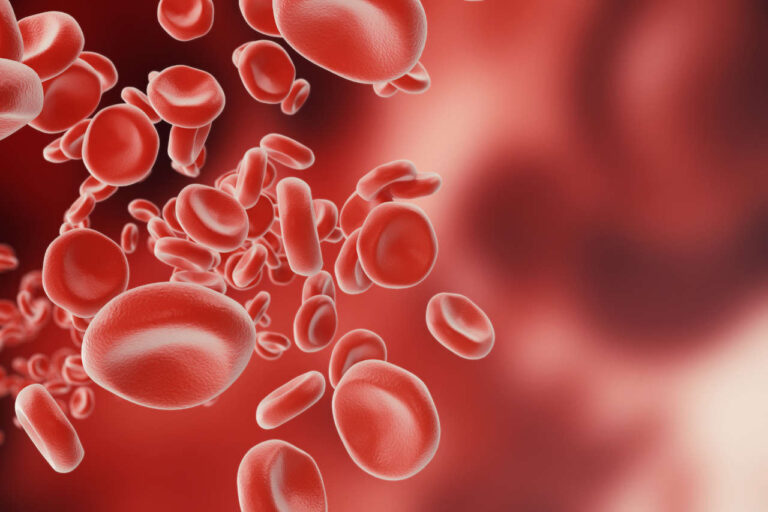
El acetato de Glatiramer, conocido por su nombre comercial Copaxone y Glatopa, es un medicamento utilizado para tratar esclerosis múltiple (EM) y sus otras formas recurrentes. Es una inmunomodulador y actúa suprimiendo el sistema inmunológico del cuerpo.
Obtenga asistencia para el copago Glatiramer
Asistencia financieraEl fármaco es un polipéptido sintético compuesto por cuatro aminoácidos. Estos aminoácidos también están presentes en la mielina, el material aislante que recubre nuestras células nerviosas. Se administra mediante una inyección diaria.
El Glatiramer es un medicamento bien tolerado. Se utiliza para reducir la frecuencia de las recaídas de la EM y ralentizar la progresión de la discapacidad. El fármaco no trata la EM por completo, pero sí frena su desarrollo.
Los pacientes alérgicos al glatiramer o a sus componentes no deben tomar este medicamento. El medicamento debe usarse con precaución durante el embarazo y la lactancia. Solo debe utilizarse tras consultar a un médico.
De manera similar, los pacientes con una infección activa deben buscar ayuda médica experta antes de tomar glatiramer.
¿Para qué se utiliza el Glatiramer?
Glatiramer es un fármaco aprobado por la FDA que se utiliza para tratar la esclerosis múltiple recurrente-remitente (EMRR), el síndrome clínicamente aislado y la EM secundaria.
El fármaco reduce la frecuencia y la gravedad de las recaídas de esclerosis múltiple y ralentiza la progresión de la enfermedad. En algunos casos, puede mejorar el funcionamiento físico y la calidad de vida.
¿Cómo funciona Glatiramer?
El Glatiramer es un fármaco inmunomodulador utilizado para tratar la esclerosis múltiple (EM). Actúa deprimiendo el sistema inmunitario, lo que reduce la inflamación y preserva las fibras nerviosas del cerebro y la médula espinal.
El fármaco realiza su función uniéndose a un tipo específico de receptor de células T. Este receptor se llama MHC clase II, que reconoce y destruye la mielina. Glatiramer impide que los linfocitos T la reconozcan y la ataquen. Este mecanismo ayuda a reducir la inflamación y a preservar las fibras nerviosas.
Además, el glatiramer aumenta la producción de linfocitos T reguladores. Estos linfocitos son esenciales para mantener el equilibrio inmunitario. Los linfocitos T reguladores suprimen la actividad autorreactiva de los linfocitos T, responsable de atacar la mielina.
Un aumento en el número de células T reguladoras disminuirá la actividad de las células T autorreactivas. Este proceso deprime la inflamación.
Glatiramer también potencia la producción de otras moléculas inmunomoduladoras. Estas incluyen interleucina-10 y factor de crecimiento transformante beta.
Estas moléculas reducen la inflamación y promueven la reparación tisular. Esto, a su vez, ayuda a preservar las fibras nerviosas del cerebro y la médula espinal.
¿Cómo se utiliza Glatiramer?
El Glatiramer se administra generalmente mediante inyección, generalmente una vez al día o cada dos días. La inyección se administra habitualmente en el tejido adiposo subcutáneo. El lugar de administración debe alternarse entre diferentes zonas del cuerpo, como la parte superior del brazo, el muslo o el abdomen.
La dosis de glatiramer la determina el médico dependiendo de la edad del paciente, su peso, su historial médico y su respuesta al medicamento.
Los pacientes deben seguir las instrucciones del médico para tomar glatiramer.
Habla con un especialista
Acerca de la asistencia para copagosEfectos secundarios de Glatiramer
Como cualquier medicamento, el glatiramer tiene efectos secundarios. Estos pueden clasificarse en leves, moderados y graves.
También existen algunos efectos secundarios comunes del medicamento. Generalmente desaparecen con el tiempo, a medida que el cuerpo se acostumbra al medicamento. Estos incluyen:
- Enrojecimiento
- Dolor articular
- Dolor de cabeza
- Erupción cutánea
- Dolor leve
- Fatiga
- Tos
- Náuseas
- Mareo
- Ansiedad
Efectos secundarios leves
Los efectos secundarios leves del glatiramer pueden incluir:
- Enrojecimiento
- Reacciones en el lugar de la inyección
- Dolor de cabeza
- Dolor leve
- Fatiga
Efectos secundarios moderados
Estos efectos secundarios pueden ocurrir con mayor frecuencia y ser más graves. Entre ellos se incluyen:
- Dolor en el pecho
- Náuseas
- Mareo
- Ansiedad
- Depresión
Efectos secundarios graves

Los efectos secundarios graves son los más graves y deben notificarse de inmediato a un profesional de la salud. Estos incluyen:
- Dificultad para respirar
- Urticaria
- Hinchazón de la cara y la garganta
- Dolor severo en el pecho
- Palpitaciones
- Frecuencia cardíaca irregular
Los efectos secundarios raros son:
- Dificultad para hablar
- Dificultad para moverse
- Diarrea
- Pérdida de apetito
- Ardor de la piel
Es importante tener en cuenta que solo algunas personas que toman glatiramer experimentan efectos secundarios. Sin embargo, si experimenta algún efecto secundario inusual, persistente o intolerable, debe informarlo a su profesional de la salud de inmediato. Este podrá ayudarle a determinar la mejor estrategia de tratamiento y aliviar los síntomas.
Contraindicaciones de Glatiramer
En primer lugar, el glatiramer no debe administrarse a personas con hipersensibilidad a sus componentes. Estos componentes incluyen manitol y lactosa. Además, no debe utilizarse en pacientes con antecedentes de miastenia gravis, un trastorno autoinmune que causa debilidad muscular.
Las personas con una infección activa, como VIH o hepatitis B, no deben tomar este medicamento. Utilice acetato de glatiramer con precaución en pacientes con inmunosupresión preexistente o que estén recibiendo una vacuna.
Las mujeres embarazadas o en período de lactancia deben evitar el glatiramer o usarlo solo en casos de extrema necesidad. Se desconoce si este medicamento se excreta en la leche materna, por lo que se recomienda no tomarlo durante la lactancia.
Obtener autorización previa
Asistencia para copagosResistencia del Glatiramer
Glatiramer está disponible en dos tipos de concentraciones de dosificación:
- 20 mg/ml
- 40 mg/ml
Ambas dosis se administran por vía subcutánea. Las formulaciones de Glatiramer 20 mg/ml y 40 mg/ml no son intercambiables. Glatiramer 20 mg/ml se administra diariamente y glatiramer 40 mg/ml se administra tres veces por semana.
Dosis de Glatiramer
Generalmente, la dosis de glatiramer se define según el peso, la edad y otros factores del paciente. Sin embargo, a continuación se presenta la dosis habitual recomendada de glatiramer.
Dosis para adultos para la esclerosis múltiple
En pacientes adultos con EM, la dosis de 20 mg de glatiramer se administra una vez al día. En cambio, la dosis de 40 mg se administra tres veces por semana.
El medicamento está disponible en viales y jeringas precargadas y debe administrarse únicamente a través de una subcutáneo ruta. La FDA no ha aprobado este medicamento para pacientes menores de 18 años.
Costo de Glatiramer
El precio del glatiramer depende del fabricante y de la región donde se compre. El costo también puede variar según el plan de tratamiento y el tipo de seguro.
Sin embargo, el coste medio del glatiramer es de aproximadamente $3,485 por 30 ml.
Conclusión
El Glatiramer es un fármaco inmunomodulador utilizado para tratar la esclerosis múltiple. Este fármaco suprime el sistema inmunitario, reduciendo así la inflamación y preservando las fibras nerviosas.
El Glatiramer se presenta en dos regímenes de dosificación: 20 mg/ml y 40 mg/ml. Se administra mediante inyección, generalmente una vez al día o en días alternos.
Los efectos secundarios pueden incluir sofocos, dolor articular, dolor de cabeza, náuseas, mareos y ansiedad. El precio promedio del glatiramer es de aproximadamente $3,485 por 30 ml.













